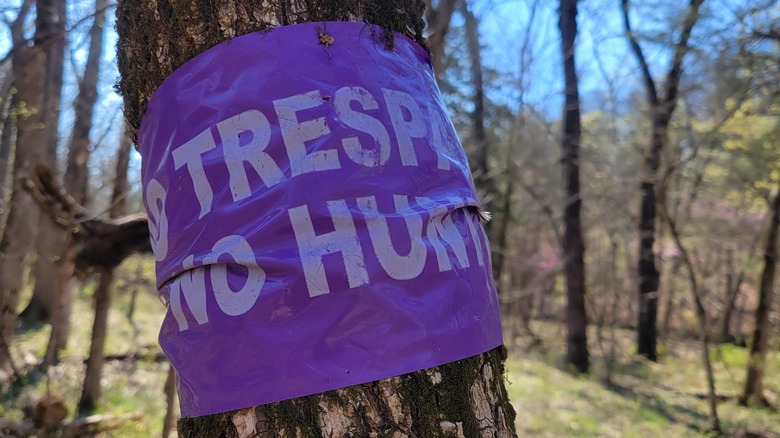Garden Trees, Shrubs & Vines
Michael Alexander Uccello
Have you ever stumbled upon a tree or a fence painted in a striking shade of purple, perhaps while hiking or in the countryside? This marking, while initially puzzling, carries a significant and legally binding message, especially in the United States. The purple paint law, a legal shorthand in several U.S. states, is an alternative to the traditional “No Trespassing” or “Keep Out” signs. Instead of using posts or fences, owners can use purple paint to signify the boundary of private property and warn against hunting, fishing, or trespassing therein.
This law is applicable in the U.S. states of Alabama, Arkansas, Arizona, Florida, Illinois, Indiana, Iowa, Kansas, Louisiana, Maine, Missouri, New Hampshire, North Carolina, Pennsylvania, South Carolina, Tennessee, Texas, Virginia, and West Virginia. Idaho and Montana use orange paint, while Maryland uses blue instead to signify the same message. Although the purple paint law is recognized in these 22 states, it’s not a nationwide standard.
The legal consequences and application methods of the purple paint can vary from state to state. Each state has specific regulations regarding how and where the paint can be used, the required frequency of markings, and visibility standards. For example, in Pennsylvania, the paint must be applied in vertical lines of at least 8 inches long and 1 inch wide, between 3 and 5 feet from the ground, and the marks must be no more than 100 feet apart. Before applying purple paint as a boundary marker, property owners should familiarize themselves with their state’s laws and requirements.
The purple paint law: No trespassing

Sandra Sapp/Shutterstock
The choice of purple as the designated color is not arbitrary. It stands out against the natural greenery and is distinct enough to catch one’s attention. Moreover, purple is a color that most colorblind individuals can still distinguish, making it an inclusive choice. The specific shade of purple that’s usually used is often referred to as “no hunting purple” and is available in most hardware stores in states where the law is in effect. Purple tape can be used as well to send the same message.
One of the key benefits of the purple paint law is its permanence. Unlike signs that may fall, deteriorate over time, or get stolen, the purple paint is a longer-lasting marker. This reduces the need for frequent replacement or maintenance. Additionally, it’s a cost-effective and labor-saving solution for landowners, as there’s no need for the property to be fenced — an easy coat of paint will do the same job.
Despite its practicality, the purple paint law is not universally known. Many hikers, hunters, and even local residents may be unaware of its meaning. This lack of awareness can lead to unintentional trespassing (still punishable by law), highlighting the need for education about this distinctive marking system. Outdoor enthusiasts must recognize and respect these markers as they would traditional “No Trespassing” signs — for their own safety and the property owner’s privacy. So, if you see a purple painted tree, “Keep Out!”



